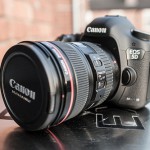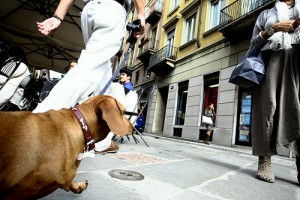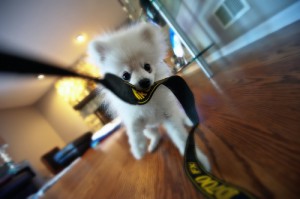Getting the Most Out of Your DSLR Camera: 7 Tips
 A DSLR camera is so much more than a point-and-shoot tool to take nice family pictures. With a few basics tips and a lot of practice, you can create artistic-studio quality work that you will be proud to share with family and friends. Here are a few tips to help you get the most out of your purchase.
A DSLR camera is so much more than a point-and-shoot tool to take nice family pictures. With a few basics tips and a lot of practice, you can create artistic-studio quality work that you will be proud to share with family and friends. Here are a few tips to help you get the most out of your purchase.
Start with the Basics
Read your manual; it’s a time investment you won’t regret. The great thing about the user manual is everything you read can be applied right away. If the thought of reading the whole thing at once intimidates you, start with a chapter at a time, and experiment with what you learn. Remember to thoroughly clean the camera lens before each photo session.
Think About Composition
Image via Flickr by how will i ever
Composition is what distinguishes a great photo from a merely good one. Composition is not just the people or objects in the photo; it is the use of space, balance, symmetry, lines, perspective and depth of field. Use the rule of thirds when composing your photo: Picture your image divided into nine squares using two vertical and two horizontal lines (many DSLRs have a grid you can superimpose over the screen). The most important elements in your photograph should be placed near the intersecting lines.
Experiment with Lighting
Light is the heart of photography—after all, the word itself is based on the Greek word for light. Practice shooting in all kinds of light; it’s best to learn to work with the light you have before adding a flash. Use the ISO settings to your advantage: ISO of 100 works with bright sunny shots, 200-400 for overcast outdoor shots or well-lit indoor ones, 800 and above for low-light situations. Experiment with backlighting, sunlight and shadows to add interest to your photos.
Master the Exposure Triangle
Image via Flickr by ShutterRunner
The exposure triangle is made up of three components: Aperture, ISO and shutter speed. When you first start taking pictures with yourDSLR, you can practice with your camera’s exposure presets. Most cameras come with portrait, landscape, action and night settings that automatically adjust the exposure triangle components for common situations. As you gain experience, experiment with manual settings to create unique effects.
Learn to Manually Focus your Camera
You can have a beautiful composition with ideal lighting, but if your photo is focused on the wrong component, no amount of computer editing can save your shot. There are many situations where manual focus is better than the auto focus setting–action shots and low-light settings, for example. Manual focus is also useful in doing portrait work. Most autofocus settings center on the subject’s eyes: Manual focus allows you to direct viewers’ attention to other aspects of the subject’s face. You have control over the most important elements in your photo using manual focus.
Equip Your Computer to Work with Photos
Invest in a high-quality monitor and calibrate it for optimal photo viewing. Calibrating your monitor is important—editing photos on an uncalibrated monitor can lead to photos with unnatural color and contrast when the photos are printed. Good photo editing software is a necessity for producing striking photos. To get started, there are many free photo editors available online; when you’re ready to move to the next level, consider investing in one of the Adobe products, like PhotoShop. Don’t forget to back up your photos for safekeeping.
Share Your Work
One of the most rewarding things about learning to use your DSLR is sharing your photos with family and friends. One of the best ways to share is uploading your digital photos to online photo-sharing sites like Flickr or SmugMug. A fast, reliable Internet connection makes it easy to upload pictures; many providers make it very economical to buy service bundles that include high-speed Internet, telephone and TV.
To really get the most out of your camera, make sure you take it with you when you’re out and about. The most amazing pictures happen when you least expect them. Remember, great photos take practice, so shoot as much as you like—and enjoy the process.
Author Bio:
Sheila Olson is a freelance writer and blogging living in Washington, DC.









No Trackbacks.